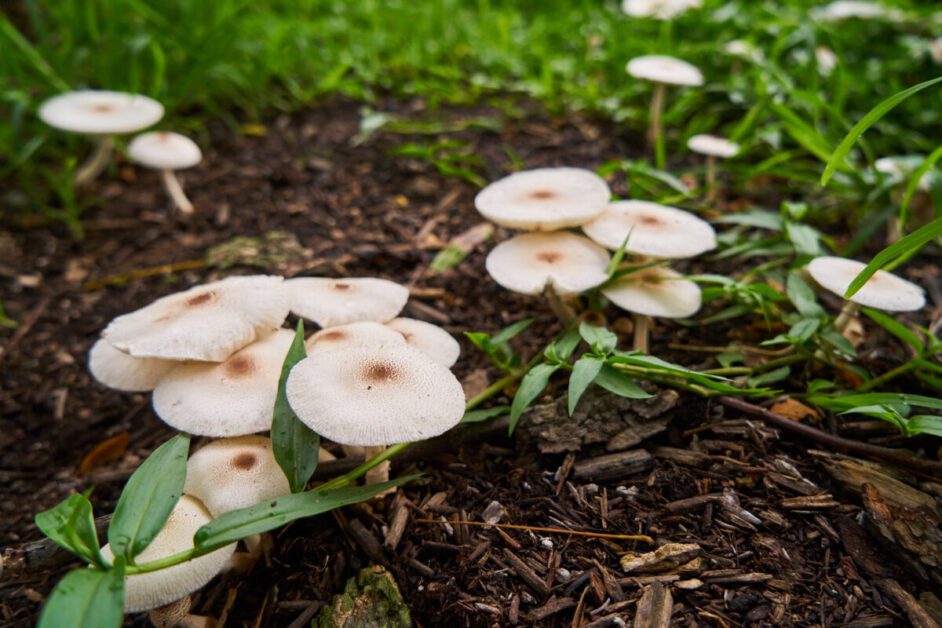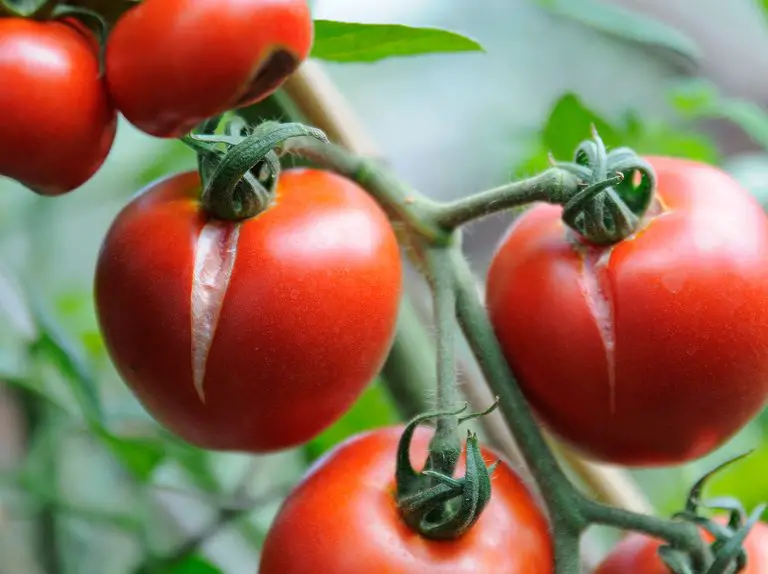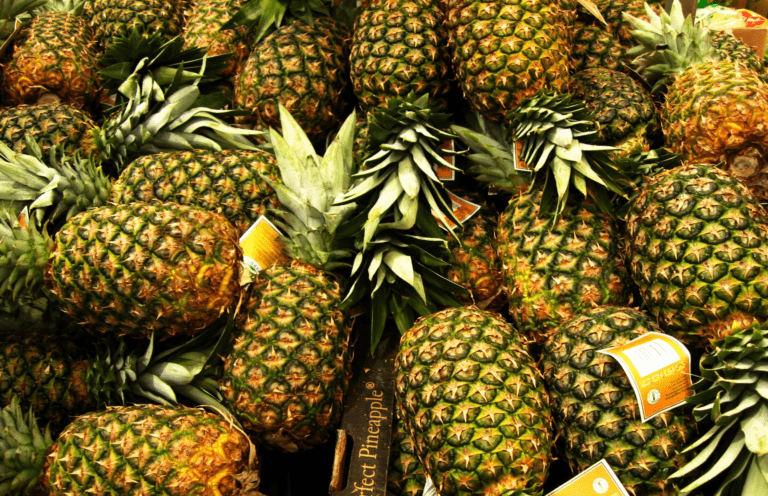What to Do When You Find Mushrooms Growing in Your Garden: Benefits and Risks of Fungi
Table of Contents
Understanding the Presence of Mushrooms in Your Garden
Mushrooms are a common sight in many gardens and can often leave gardeners puzzled about their presence. However, understanding why mushrooms emerge in your garden can provide valuable insights into the health and vitality of your garden ecosystem.
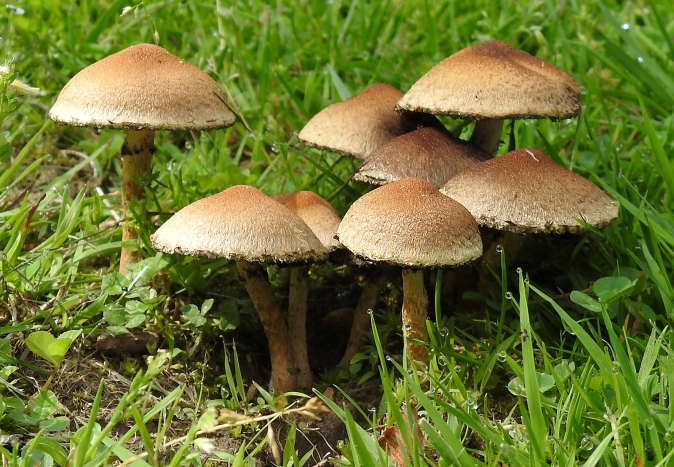
One reason mushrooms appear in your garden is due to the presence of decaying organic matter. Mushrooms are the fruiting bodies of fungi, and they play a crucial role in breaking down organic material, such as dead leaves, wood chips, or compost. The mycelium, which is the unseen network of fungal threads, feeds on this decaying matter, releasing nutrients that enrich the soil. As a result, the mushrooms you see are a sign of a thriving decomposition process in your garden, indicating that important nutrients are being recycled back into the soil.
Identifying Different Types of Garden Mushrooms
Different types of mushrooms can often be found in gardens, adding a touch of whimsy and natural beauty to the landscape. However, it is essential to properly identify these mushrooms, as some can be harmful if ingested or pose a risk to the garden ecosystem. When identifying garden mushrooms, it is crucial to consider their physical characteristics, such as color, shape, and size. Additionally, observing the habitat in which the mushrooms are growing can provide valuable clues for identification.
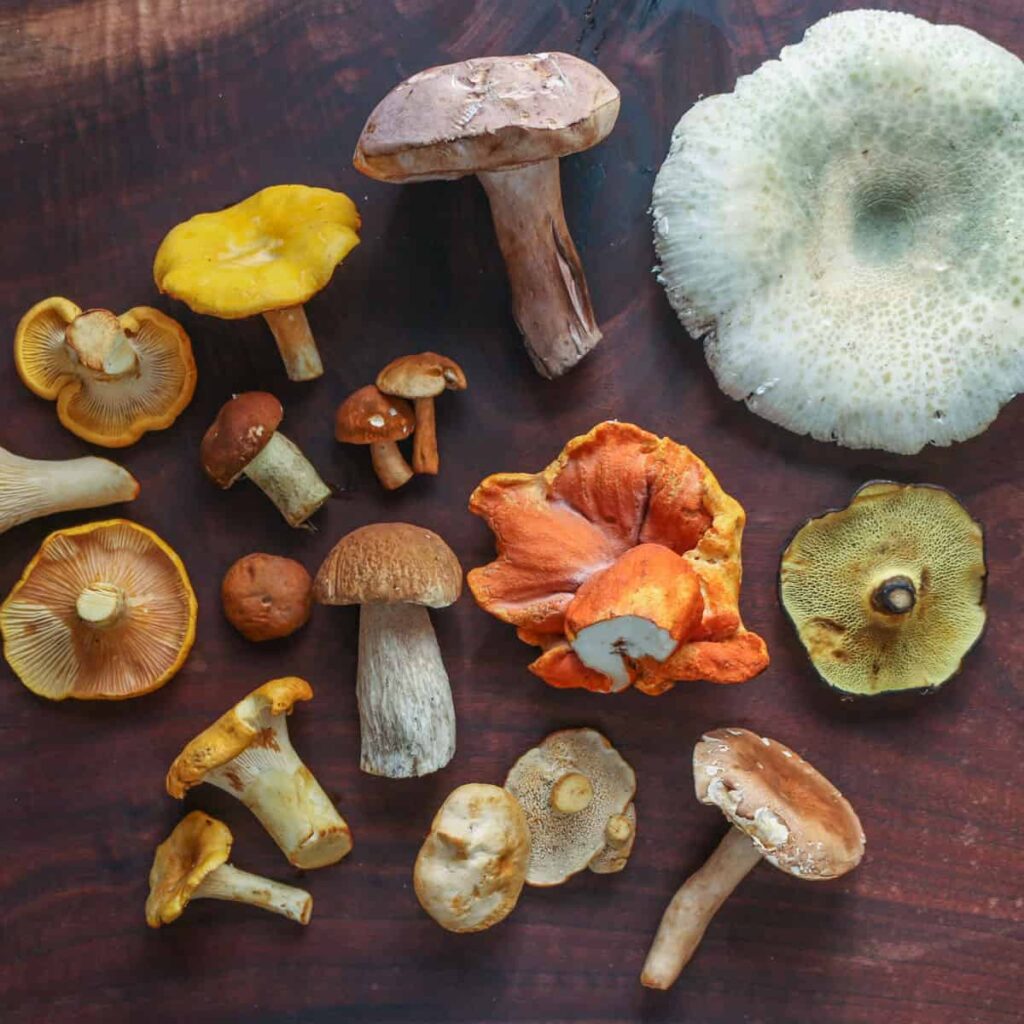
One common type of garden mushroom is the Agaricus bisporus, also known as the button mushroom. These mushrooms have a creamy-white to light brown color, a convex cap shape, and a delicate, earthy aroma. Another frequently encountered mushroom is the Amanita muscaria, which is easily identifiable by its bright red cap speckled with white dots. This mushroom is characterized by its poisonous nature and should be handled with caution. By familiarizing themselves with the distinct features of different types of garden mushrooms, gardeners can effectively identify and differentiate between safe and potentially harmful species.
The Role of Fungi in Ecosystems
Fungi play a crucial role in maintaining a balanced and thriving ecosystem. As decomposers, they break down organic matter, such as fallen leaves and dead plants, into simpler compounds, releasing essential nutrients back into the soil. This nutrient cycling process is vital for the health and fertility of the soil, allowing plants to access the necessary elements for growth. Fungi also form symbiotic relationships with plants, known as mycorrhizae, where they exchange nutrients with plant roots, enhancing their ability to absorb water and minerals from the soil. This mutualistic association greatly benefits both the fungi and the plants, facilitating their overall survival and productivity.
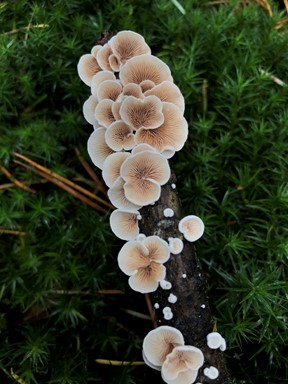
In addition to their role as decomposers and symbiotic partners, fungi also contribute to the overall diversity and stability of ecosystems. They are involved in various ecological processes, such as supporting the growth of other organisms, serving as a food source for animals, and even playing a role in the carbon cycle. Some fungi produce antibiotics or toxins that help keep harmful pathogens in check, protecting other organisms within the ecosystems.
Common Benefits of Mushrooms in Your Garden
Mushrooms can play a valuable role in enhancing the health and productivity of your garden. These fascinating fungi offer a range of benefits that can positively impact the overall well-being of your plants and ecosystem. One of the key advantages of having mushrooms in your garden is their ability to improve soil quality. As mushrooms break down organic matter, they release nutrients into the soil, enriching it with essential elements such as nitrogen, phosphorus, and potassium. This enhanced nutrient content can promote healthier plant growth, stronger root systems, and increased resistance to diseases and pests.
Here are some common benefits of mushrooms in your garden:
- Natural Fertilizer: Mushrooms help break down organic matter, releasing nutrients into the soil and acting as a natural fertilizer.
- Improved Soil Structure: The mycelium network of mushrooms enhances soil structure, promoting better aeration and water retention.
- Disease Suppression: Certain mushrooms possess properties that can suppress harmful soil-borne pathogens, contributing to plant health.
- Biodiversity: Mushrooms support biodiversity by creating a diverse microbiome in the soil, fostering a healthier ecosystem.
- Nutrient Cycling: Mushrooms play a role in nutrient cycling, recycling, and redistributing nutrients in the soil for the benefit of plants.
- Mycorrhizal Associations: Some mushrooms form symbiotic relationships with plant roots, aiding in nutrient absorption and overall plant growth.
- Water Conservation: The mycelium of mushrooms can help retain moisture in the soil, reducing the need for frequent watering.
- Erosion Control: Mushrooms’ mycelial networks help bind soil particles, preventing erosion and improving soil stability.
- Composting Aid: Mushrooms assist in the decomposition of organic matter, facilitating the composting process in your garden.
- Educational Value: Growing mushrooms can be an educational experience, offering insights into the fascinating world of fungi and their ecological roles.
In addition to their soil-enriching capabilities, mushrooms also contribute to the overall balance and biodiversity of your garden. These fungi form symbiotic relationships with beneficial soil bacteria, creating a network of interconnected organisms that work together to support plant health. By increasing the microbial activity in the soil, mushrooms help to break down organic matter more efficiently, making nutrients more readily available to plants. This improved nutrient cycling can lead to a more sustainable and self-sufficient garden ecosystem, reducing the need for synthetic fertilizers and chemical inputs. With these ecological benefits, it’s clear that incorporating mushrooms into your garden can be a wise and environmentally-friendly choice.
Potential Risks Associated with Garden Mushrooms
Garden mushrooms can add a touch of enchantment to your outdoor space, but it’s important to be aware of the potential risks associated with these fungi. While many mushrooms are harmless and even beneficial to your garden, there are a few key factors to consider.
| Risk | Description |
|---|---|
| Toxicity | Some mushrooms can be poisonous, causing gastrointestinal distress, organ failure, or even death. |
| Misidentification | The presence of mycotoxins in mushrooms can have harmful effects on health, particularly in larger quantities. |
| Allergic Reactions | Individuals may be allergic to certain mushrooms, resulting in allergic reactions upon consumption. |
| Mycotoxins | Presence of mycotoxins in mushrooms can have harmful effects on health, particularly in larger quantities. |
| Contaminants | Mushrooms can absorb contaminants from the soil, such as heavy metals or pesticides. |
| Digestibility | Some mushrooms may be difficult to digest, causing digestive issues in sensitive individuals. |
| Interactions with Medications | Certain mushrooms may interact with medications, potentially reducing their effectiveness or causing adverse effects. |
First and foremost, one of the primary risks lies in misidentifying poisonous varieties of mushrooms. Some species can be extremely toxic if ingested, posing a serious health hazard to humans and pets alike. It is crucial to exercise caution and refrain from consuming any wild mushrooms unless you are confident in your identification skills or have sought expert advice.
Assessing the Impact of Mushrooms on Your Garden Plants
Mushrooms are a common occurrence in gardens, often popping up unexpectedly in various locations. While their presence can add a whimsical touch to the overall landscape, it is essential to assess their impact on your garden plants. The relationship between mushrooms and garden plants is complex, as these fungi can have both positive and negative effects.
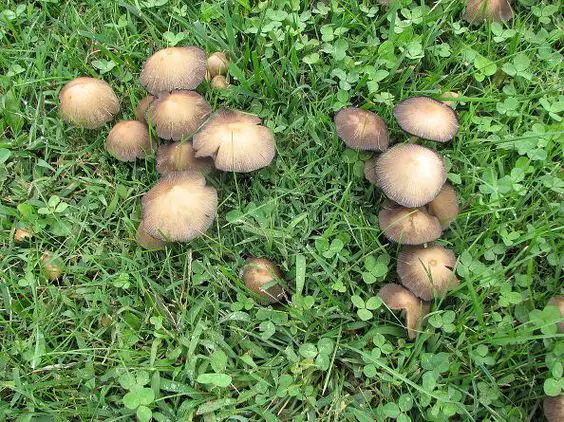
On the positive side, mushrooms play a vital role in soil health. They are incredible decomposers, breaking down organic matter and releasing nutrients back into the soil. Through this process, they enhance soil fertility and create an environment conducive to plant growth. Additionally, some mushrooms form beneficial symbiotic relationships with plants, such as mycorrhizal associations, where they support the absorption of water and nutrients by plant roots.
However, it is crucial to also consider the potential risks associated with mushrooms in your garden. While most mushrooms are harmless and serve beneficial purposes, some species can be toxic to both humans and plants. Some mushrooms release toxins or chemicals that can inhibit the growth and development of neighboring plants, leading to stunted growth or even plant death. Therefore, it is important to assess the impact of mushrooms on your garden plants and take appropriate measures to manage their presence effectively.
Techniques for Managing Mushroom Growth in Your Garden
Mushrooms can be a common sight in gardens, often popping up unexpectedly after rainfall or when conditions are favorable. While some gardeners embrace the presence of mushrooms as a sign of a healthy ecosystem, others may find their growth undesirable or potentially harmful to their plants. Fortunately, some techniques can be employed to manage mushroom growth in your garden.
One approach to managing mushroom growth is to adjust the environmental conditions in your garden. Mushrooms thrive in moist and shaded areas, so ensuring proper drainage and increasing sunlight exposure can discourage their growth. Consider trimming back overhanging branches or thinning out dense foliage to allow more sunlight to reach the ground. Additionally, regularly aerating the soil can help to reduce excess moisture, making it less hospitable for mushrooms to flourish.
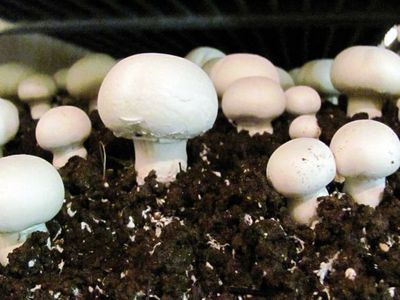
Another effective technique is to physically remove mushrooms as soon as they appear. This can be done by gently plucking them from the soil and being careful to remove the entire mushroom, including the underground mycelium. Since mushrooms release spores when they mature, prompt removal can help prevent the spread of spores and limit the establishment of new mushroom colonies. To dispose of the mushrooms, it is recommended to place them in a sealed bag and discard them in the compost or trash, away from your garden area.
By implementing these techniques, you can effectively manage the growth of mushrooms in your garden. However, it is important to note that eliminating mushrooms may not always be possible or necessary. Mushrooms play a crucial role in the ecosystem, aiding in the decomposition process and contributing to soil health. Thus, it is vital to strike a balance between managing mushroom growth and maintaining a thriving garden environment.
Natural Methods for Controlling Mushroom Growth
As a gardener, you may encounter mushrooms sprouting up in your garden. While mushrooms can sometimes add a whimsical touch to your landscape, they can also be a nuisance and negatively impact the health of your plants. Thankfully, there are natural methods available for controlling mushroom growth and maintaining a healthy garden environment.
One effective approach is to remove and properly dispose of any existing mushrooms in your garden. Be sure to wear gloves and use a small garden shovel to carefully dig up the mushrooms, including their entire root system. Avoid simply plucking the mushrooms from the ground, as this may leave behind fungal spores that can quickly regenerate. Dispose of the mushrooms in a sealed bag or container to prevent further contamination.
To prevent future mushroom growth, it is essential to improve the drainage of your garden soil. Mushrooms thrive in moist and damp conditions, so ensuring proper water drainage can significantly reduce their occurrence. Consider adding organic matter, such as compost or aged manure, to improve soil structure and increase water absorption. Additionally, regular aeration of the soil, either by tilling or using a garden fork, can help to reduce excess moisture and discourage mushroom growth.
By implementing these natural methods, you can effectively control mushroom growth and maintain a healthy garden environment. However, it’s important to note that if you have persistent mushroom problems or are unsure about the safety of a particular mushroom species, it is recommended to consult with a gardening professional or mycologist for further guidance.
Chemical Approaches to Eliminating Mushrooms in Your Garden
Chemical approaches can be an effective method for eliminating mushrooms in your garden. However, it is important to approach this method with caution and follow best practices to ensure the safety of your plants and the environment.
One common chemical method is the use of fungicides. Fungicides are specifically designed to target and control fungal growth, including mushrooms. These products typically contain active ingredients that inhibit the growth and development of fungi. When applying fungicides, it is crucial to carefully read and follow the instructions provided by the manufacturer. This will ensure that you apply the correct dosage and adhere to any safety precautions. Additionally, it is important to only use fungicides that are labeled for use in gardens and follow any restrictions on their application.
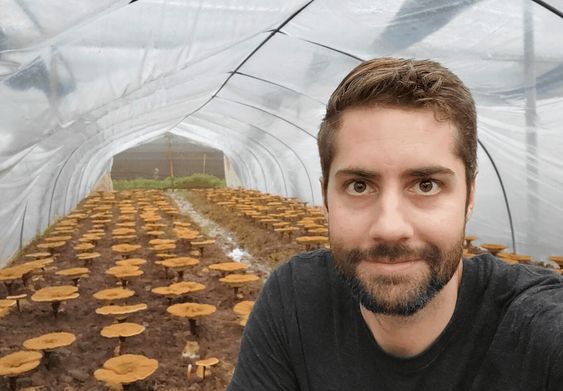
Another chemical approach is the use of bleach or vinegar. These substances have some fungicidal properties and can be applied directly to the mushrooms or the surrounding soil. However, it is important to note that bleach and vinegar can also harm beneficial organisms and may have limited effectiveness in fully eliminating mushrooms. Before using bleach or vinegar, it is recommended to conduct a small test patch and observe the results to determine the efficacy and potential negative impacts on your garden. Remember to exercise caution and wear appropriate protective gear when handling these chemicals.
When considering chemical approaches to eliminate mushrooms, it is important to take into account the potential risks and side effects. Chemical control methods may have harmful impacts on the environment, beneficial insects, and other plants in your garden. Therefore, it is always recommended to explore natural, non-chemical alternatives first and consider chemical approaches as a last resort.
Steps to Take When Encountering Poisonous Mushrooms
When encountering mushrooms in your garden, it is important to exercise caution, especially when it comes to identifying potentially poisonous species. While the vast majority of mushrooms are harmless, it is crucial to have a basic understanding of the ones that can cause harm to humans or pets. Here are some steps to take when encountering mushrooms that you suspect may be poisonous.
First and foremost, it is essential to never consume or handle any mushroom unless you are certain it is safe. Remember, even a small nibble can have severe consequences. If you come across a mushroom that you are unsure about, the best course of action is to leave it undisturbed. Avoid touching, picking, or disturbing the mushroom in any way.
Next, it is advisable to document the mushroom’s appearance to aid in identification. Take clear photographs from various angles, including the cap, gills, stem, and any additional features such as a ring or veil. This documentation will be valuable if you need to seek expert advice or consult an authoritative source later on. Additionally, make a note of the mushroom’s habitat, including the type of soil, nearby plants, and any specific conditions that may further assist in identification.
Remember, correctly identifying mushrooms can be a complex task that requires expertise. Therefore, it is always advisable to consult with a mycologist, a trained professional who specializes in the study of fungi. Reach out to your local agricultural extension office, botanical society, or mycological association for guidance on how to proceed. Providing them with documented photographs and relevant information will help them offer accurate advice or potentially identify the mushroom species.
In the case of accidental ingestion or exposure to a potentially poisonous mushroom, it is crucial to seek immediate medical attention. Even if no symptoms are present, do not take any risks, as some toxic mushrooms can take hours or even days to cause noticeable effects. Contact your doctor, local poison control center, or emergency services for guidance on how to proceed.
By following these steps, you can mitigate the risks associated with encountering potentially poisonous mushrooms in your garden. Remember, your safety and the safety of others should always be the utmost priority.
Understanding the Health Benefits of Edible Garden Mushrooms
Edible garden mushrooms not only add flavor and texture to your dishes but they are also packed with numerous health benefits. These fungi are not only low in calories but are also a rich source of essential nutrients. For instance, mushrooms are an excellent source of B vitamins, including riboflavin, niacin, and pantothenic acid, which play a crucial role in energy production and metabolism. Additionally, they contain minerals such as selenium, copper, and potassium, which are vital for maintaining healthy body functions.
What sets edible garden mushrooms apart is their potential immune-boosting properties. Research suggests that certain mushrooms, like shiitake and maitake, contain compounds that stimulate the immune system and may help fight off infections and diseases. Furthermore, these fungi are also rich in antioxidants, which help reduce oxidative stress and protect the body against harmful free radicals. With their high fiber content, mushrooms can also support healthy digestion and contribute to weight management.
As you explore the numerous health benefits of edible garden mushrooms, you’ll discover the versatility they offer in enriching your diet with both flavor and nutrition. Whether you sauté them as a savory side dish, blend them into a hearty soup, or incorporate them into a vibrant salad, these fungi are a valuable addition to any culinary repertoire. So next time you’re planning your garden, consider including mushroom varieties that are not only delicious but also provide an array of health benefits for you and your loved ones to enjoy.
Incorporating Edible Mushrooms into Your Garden Design
Edible mushrooms can be a delightful addition to your garden design, not only for their aesthetic appeal but also for the flavorful bounty they can provide. Incorporating edible mushrooms into your garden allows you to have a sustainable source of fresh and nutritious food right at your doorstep. With a little planning and care, you can create an environment that nurtures the growth of these delectable fungi.
One of the first steps in incorporating edible mushrooms into your garden design is to select the appropriate mushroom varieties to cultivate. Consider factors such as climate, soil conditions, and available space when choosing the types of mushrooms to grow. Popular choices for garden cultivation include oyster mushrooms, shiitake mushrooms, and wine cap mushrooms, among others. These varieties are known for their adaptability and relatively easy cultivation requirements, making them suitable for both beginner and experienced gardeners.
Expert Tips for Maintaining a Healthy Garden Environment
Maintaining a healthy garden environment is essential for the overall success of your gardening endeavors. By implementing expert tips, you can ensure that your garden remains vibrant and productive throughout the year. Here are a few strategies to consider:
1. Soil Health: Start by prioritizing the quality of your soil. Regularly test its pH levels and nutrient content to identify any deficiencies. Amend the soil with organic matter such as compost or aged manure to improve its structure and fertility. Additionally, practicing crop rotation can help prevent soil-borne diseases and keep your garden beds healthy.
2. Watering Techniques: Proper watering is crucial for the well-being of your plants. Instead of relying on a fixed schedule, monitor the moisture levels in your garden and adjust watering accordingly. Overwatering can lead to root rot and disease, while underwatering can stunt growth. To conserve water, consider drip irrigation or soaker hoses, which deliver moisture directly to the roots while reducing evaporation.
Remember, maintaining a healthy garden environment is a continuous process that requires diligence and observation. By implementing these expert tips, you’ll be well on your way to creating a thriving garden that rewards you with bountiful harvests and a beautiful outdoor space.
For more details check the vedio given below:
How do mushrooms contribute to a healthy garden environment?
Mushrooms play a vital role in the ecosystem of your garden by breaking down organic matter, improving soil structure, and promoting nutrient cycling.
Can all types of garden mushrooms be beneficial?
While many garden mushrooms have positive effects, not all types are beneficial. Some varieties can be harmful to plants or even toxic if ingested.
What are the potential risks associated with garden mushrooms?
The potential risks of garden mushrooms include competition for nutrients with plants, the spread of diseases, and the presence of toxic or poisonous varieties.
How can I assess the impact of mushrooms on my garden plants?
To assess the impact of mushrooms on your garden plants, observe their growth, health, and overall appearance. If you notice any negative effects, such as wilting or stunted growth, it may be necessary to manage mushroom growth.
What are natural methods for controlling mushroom growth in my garden?
Natural methods for controlling mushroom growth include improving drainage, increasing sunlight exposure, avoiding over-watering, and regularly removing decomposing organic matter.
Are there chemical approaches to eliminating mushrooms in my garden?
Yes, chemical approaches such as fungicides can be used to eliminate mushrooms in your garden. However, it is important to carefully follow instructions and consider the potential impact on other organisms and the environment.
What steps should I take if I encounter poisonous mushrooms in my garden?
If you encounter poisonous mushrooms in your garden, it is essential to remove them promptly and carefully. Avoid touching or ingesting them and consult with a local expert or poison control center for proper identification and guidance.
What are the health benefits of edible garden mushrooms?
Edible garden mushrooms can provide various health benefits, including boosting the immune system, providing essential nutrients, aiding digestion, and potentially reducing the risk of certain diseases.
How can I incorporate edible mushrooms into my garden design?
You can incorporate edible mushrooms into your garden design by creating dedicated mushroom beds or logs, using mushroom spores or spawn, and researching specific cultivation techniques for different edible varieties.
What are some expert tips for maintaining a healthy garden environment?
Some expert tips for maintaining a healthy garden environment include regular soil testing, proper watering and drainage practices, companion planting, crop rotation, and maintaining a balanced ecosystem that includes beneficial organisms like mushrooms.

Kanike Sreekanth, a prolific writer at SouthElMonteHydroponics, brings a unique blend of creativity and scientific rigor to the table. With a degree in Horticulture from a prestigious institution, Kanike’s expertise spans hydroponic farming, plant biology, and agricultural sustainability. Their passion for exploring innovative cultivation methods and promoting environmental stewardship drives them to uncover new insights in the realm of hydroponics. Kanike’s writing serves as a conduit for sharing their knowledge and inspiring others to embrace alternative farming practices for a more sustainable future.

